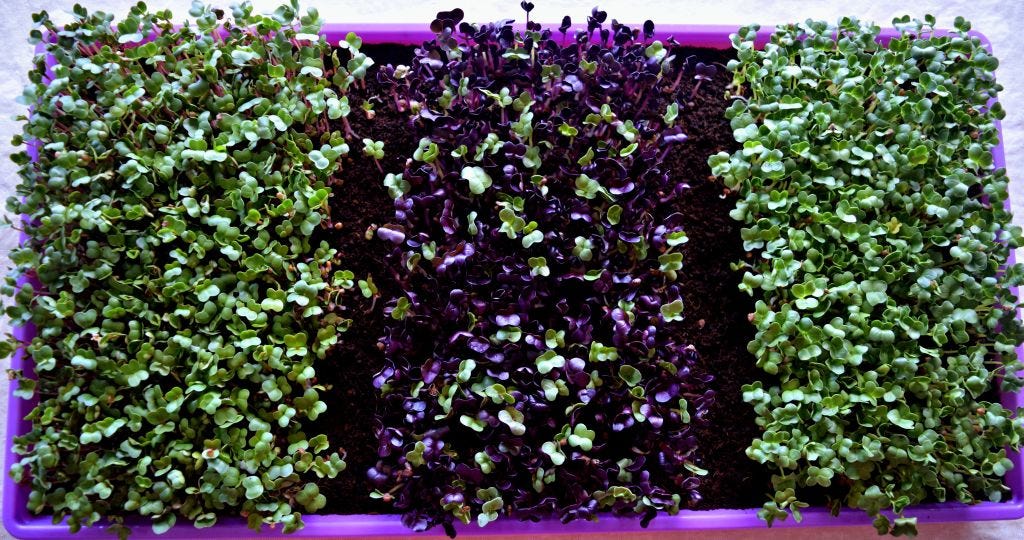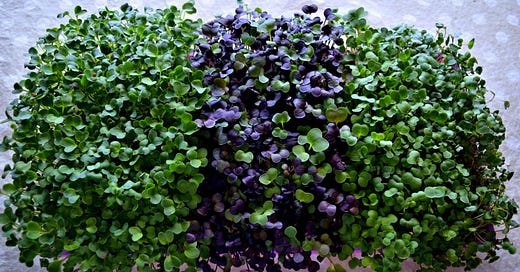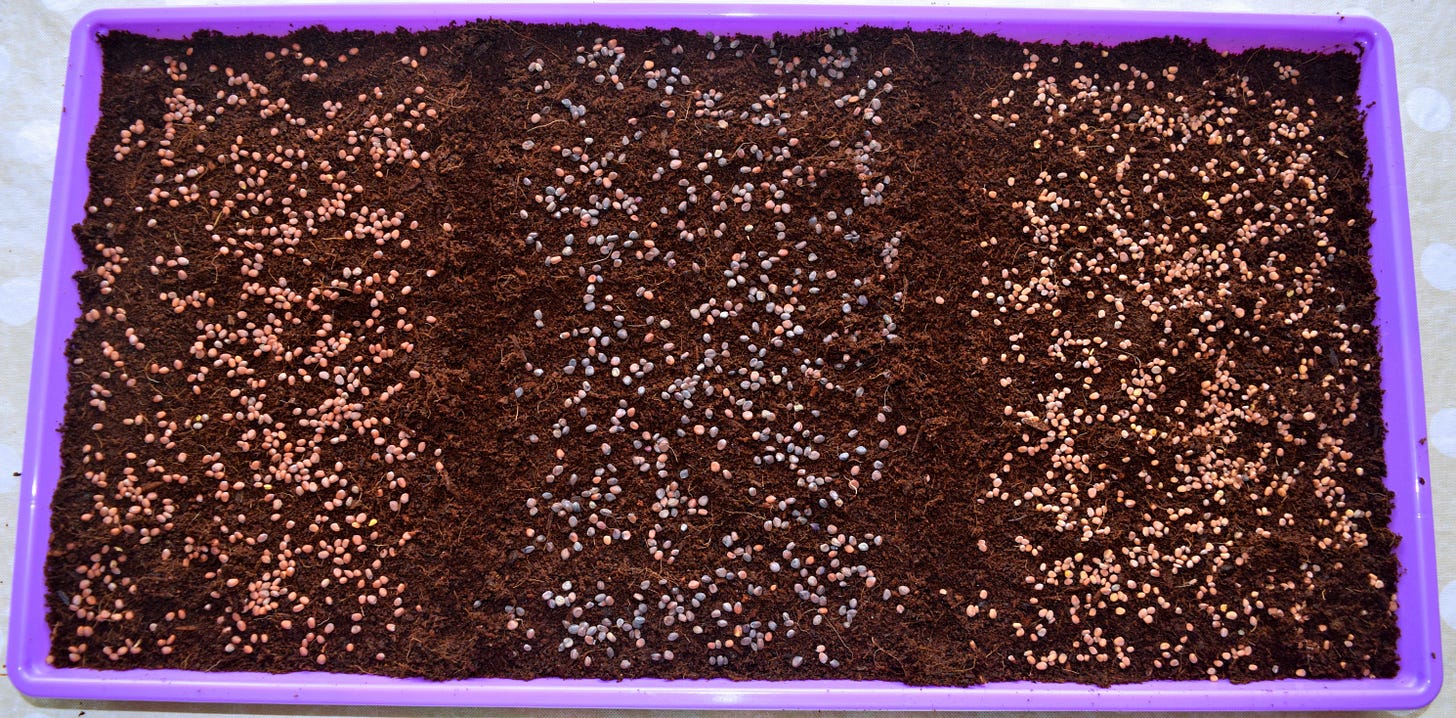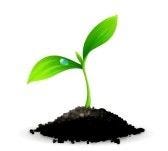Radish
Spice up your salads with a small handful of radish microgreens or serve them on a sandwich, either way is awesome. Radishes are easy to grow and should be one of the first crops to try when growing microgreens.
I wanted to try several different varieties to see which ones I like best, so I grew what I call a Radish Trio Sampler with the varieties of China Rose (Raphanus sativus), Sango Purple (Raphanus sativus), and Daikon (Raphanus sativus var. longipinnatus) radishes. I like a milder radish so I chose China Rose. I couldn’t resist trying the purple color of the Sango Purple because I love color and everyone eats with their eyes first, so color, it is. The Daikon radish is for my spice loving husband. Who knows, I might even try some.
According to the study, Radish Sprouts Versus Broccoli Sprouts, “In the case of broccoli, the glucosinolate, glucoraphanin, is converted to an isothiocyanate, sulforaphane, while in radish a similar glucosinolate, glucoraphenin, is broken down to form the isothiocyanate, sulforaphene.” I was surprised to learn that radishes are actually better than broccoli for their chemoprotective qualities.
The reason for this difference is likely to be due to the presence in broccoli (and absence in radish) of the enzyme cofactor, epithiospecifier protein (ESP).
Radish sprouts versus broccoli sprouts: A comparison of anti-cancer potential based on glucosinolate breakdown products, January 2009
Acta horticulturae 841
DOI: 10.17660/ActaHortic.2009.841.21
Authors: T.J. O’Hare, D.J. Williams
Wow! The plus side is that radish seeds are cheaper, grow faster than broccoli and come in different colors and flavors. They both are cruciferous vegetables in the family Brassicaceae, but the radish is looking more attractive as I learn more about them. There are lots of varieties to pick from. I got mine from True Leaf Market.
Eight Reasons to Eat Radishes:
Contains vitamins A, B, C, E, & K, and also folic acid, niacin, potassium, iron, phosphorus, pantothenic acid, calcium, magnesium, zinc, and beta carotenes
As a detoxifier and a natural diuretic radish stimulates and flushes the kidneys of toxins
Fiber content helps keep the gastrointestinal tract working efficiently and helps prevent constipation and piles
Good for loosing weight, low in calories
Rich in anthocyanin, a flavonoid that can help prevent cardiovascular diseases, like heart attacks
Reduce congestion in the nasal tract and help clear colds allergies and sinus congestion and infections
Radish improves circulation and acts as a vasodialator which relaxes the blood vessels and reduces hypertension
Brings down a fever and helps reduce inflammation
Radish Trio Sampler
I couldn’t decide which variety I wanted to grow most, so I planted a trio sampler that included 10 grams of each variety (30 grams total). I find it fascinating to see the variations in color, even in the seed stage. Click on any of the photos above to see the details. (L to R: China Rose, Sango Purple, Daikon)
“Radish is fast and easy to grow. The microgreen is substantial and very crunchy. Due to its fast growth can be harvested as early as 5 days, assuming you have exposed to light on day 3. These radish microgreens are at their peak of crunchiness at about day 5 or 6. Once they grow larger they get more leafy and lose their crunch.” — True Leaf Market (Daikon Radish)

How to Grow Radishes
If you are new to growing microgreens, radishes are a really easy crop to start with. I found this YouTube video to be very inspirational and educational. I chose some different varieties to grow, there are so many with radishes. For a great walk through on how to grow radishes watch Mandy step you through the basics, On The Grow YouTube channel, Stunning Triple Radish – Mix episode.
Radishes are great on salads, sandwiches, anywhere you want a little “zing” in your meal. What are your favorite ways to eat radish microgreens?










